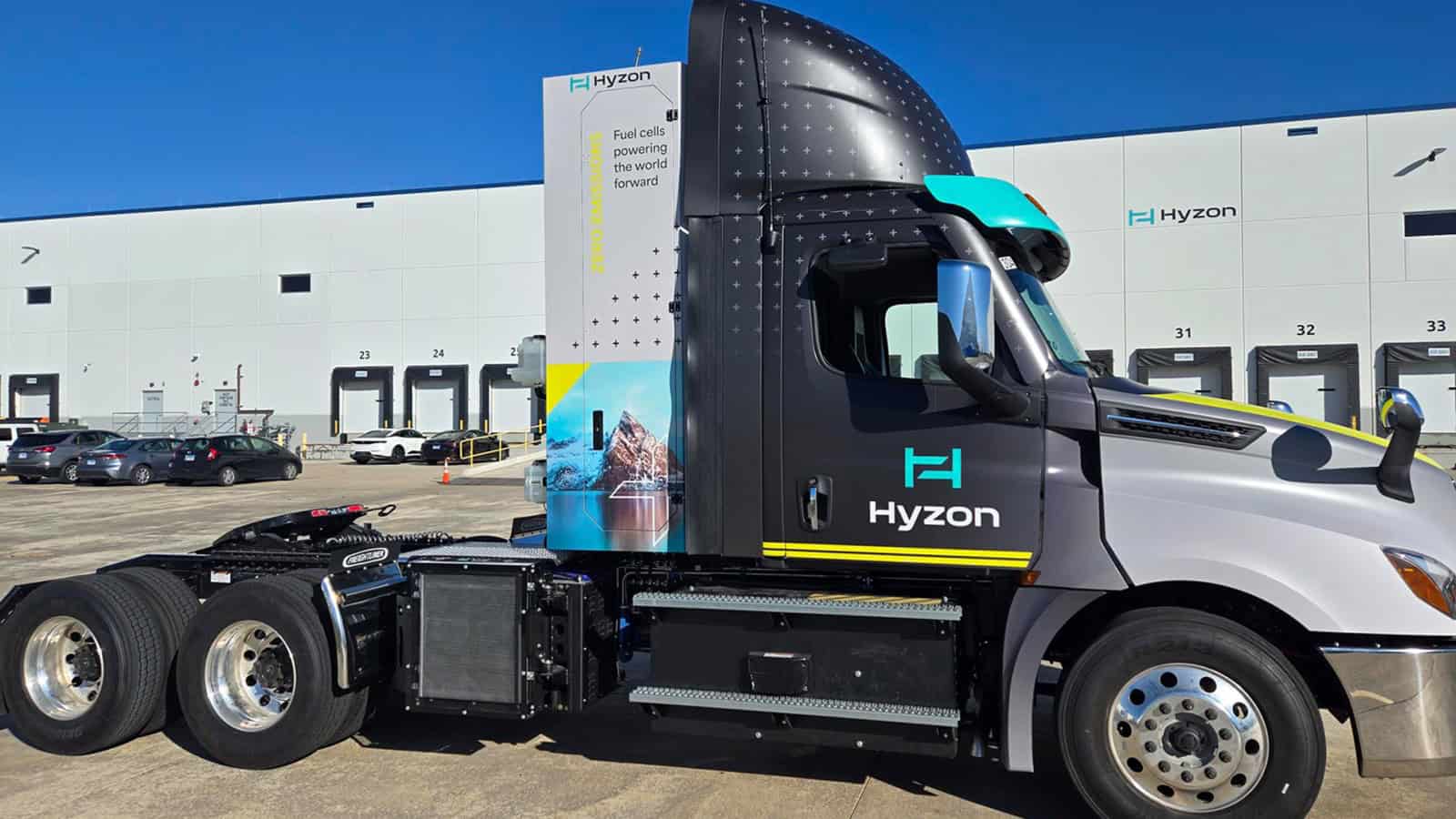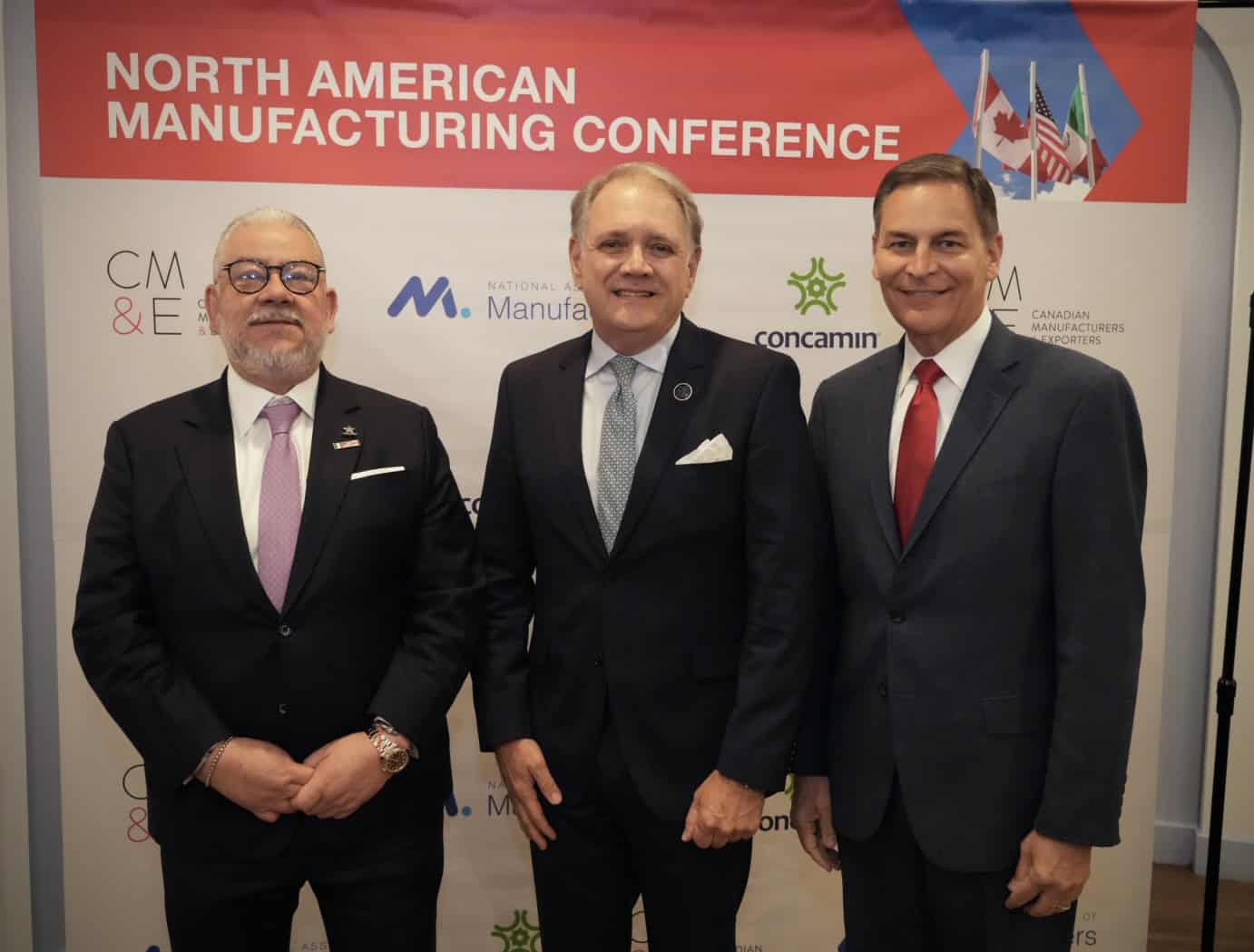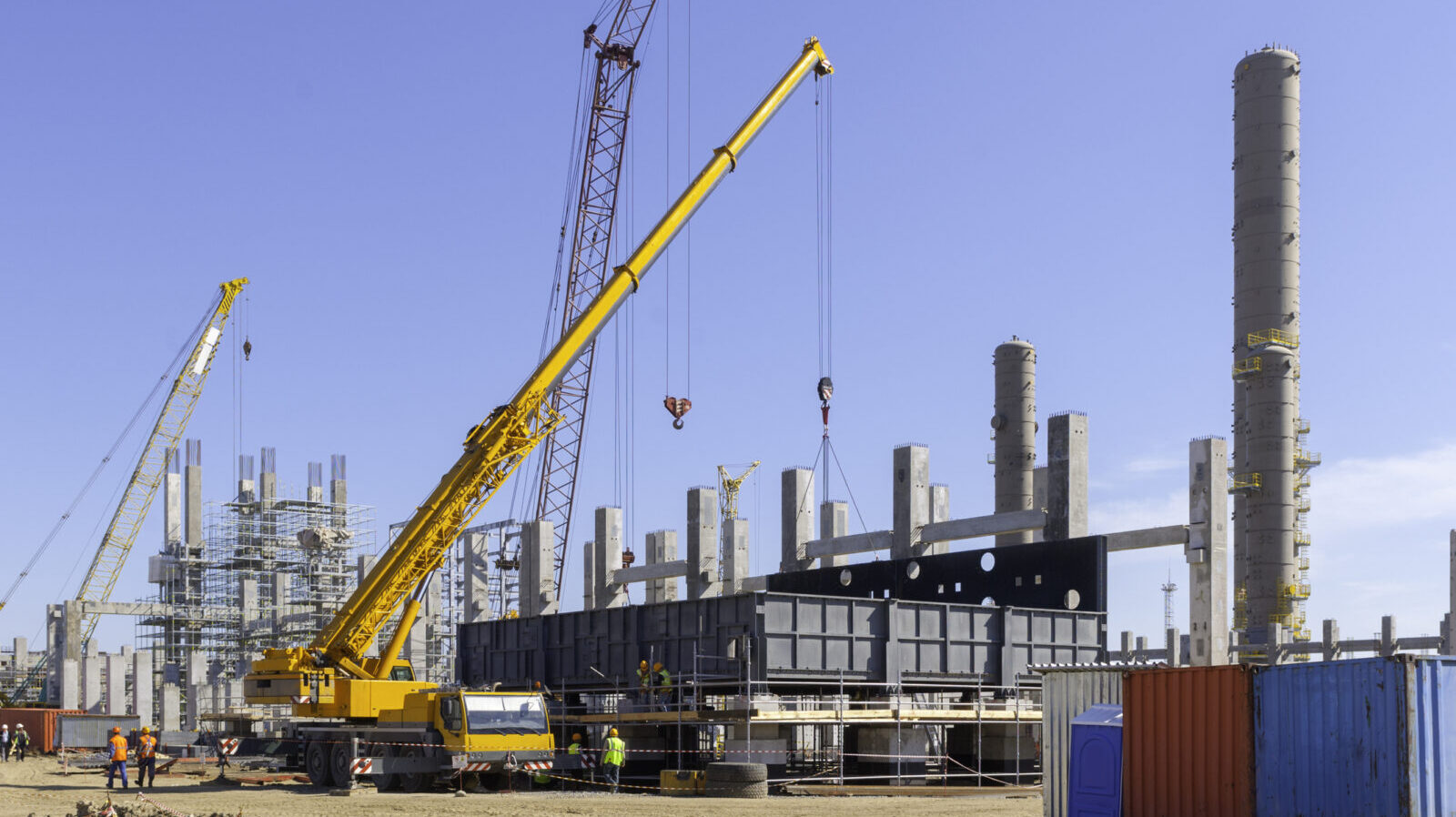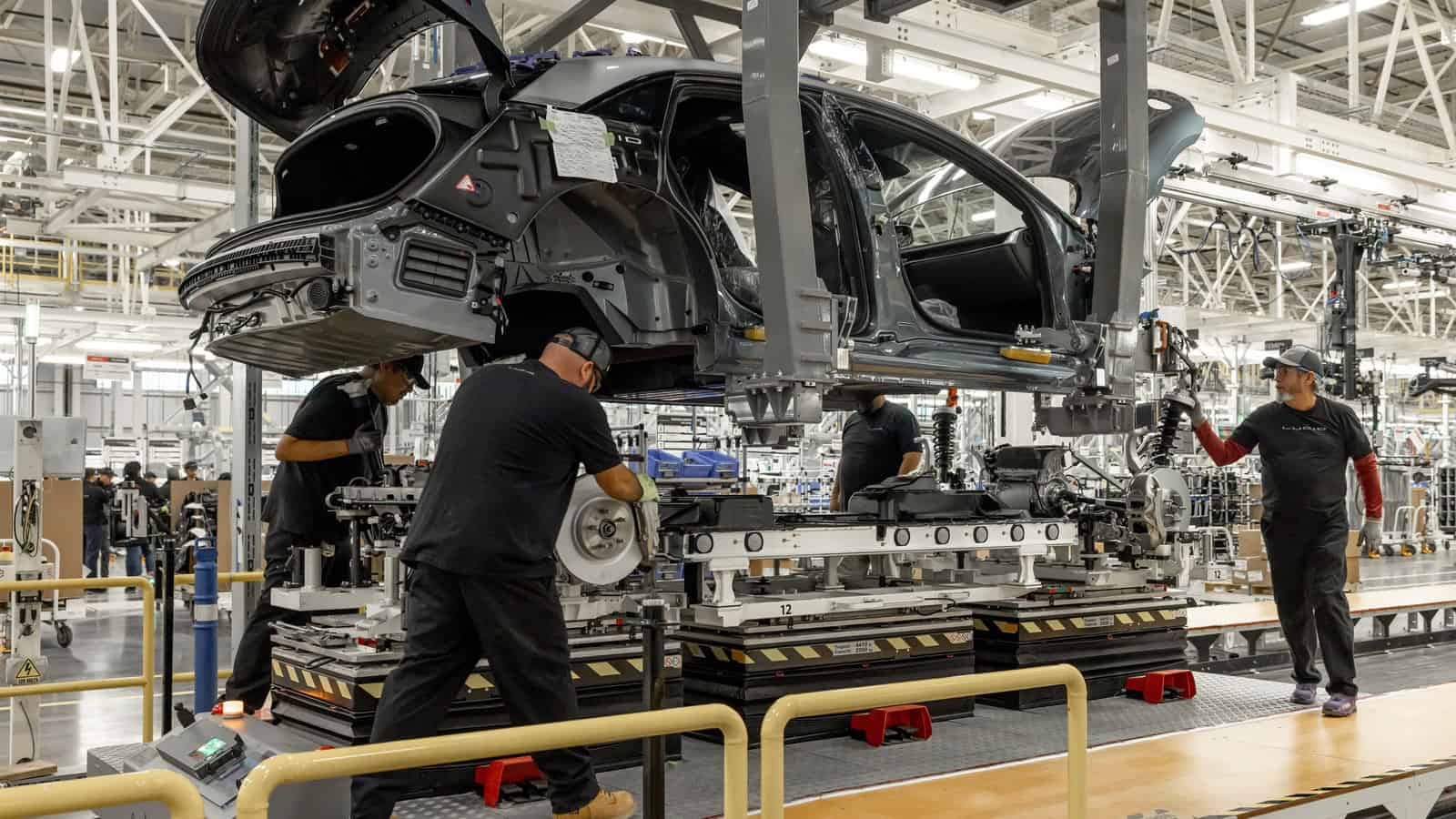Manufacturers Ready to Work with Bessent to Ensure That We Can Continue to Drive Economy Forward
Washington, D.C. – National Association of Manufacturers President and CEO Jay Timmons issued the following statement on the nomination of Scott Bessent to be the next Treasury Secretary:
“President Trump’s 2017 tax reforms were rocket fuel for manufacturing, and their transformative impact cannot be overstated. They put into place competitive policies that fueled record job creation, wage growth, capital investment and innovation.
“With the nomination of Scott Bessent as Secretary of the Treasury, we have an opportunity to build on this momentum. President Trump recently pledged at the NAM’s fall board meeting that he will make these tax cuts permanent, and Scott will play a vital role in achieving that goal.
“Scott’s deep expertise in financial markets and his dedication to fostering economic growth make him an outstanding choice to lead the Treasury Department. Manufacturers are ready to work with him to ensure that manufacturing can continue to drive the economy forward.”
-NAM-
The National Association of Manufacturers is the largest manufacturing association in the United States, representing small and large manufacturers in every industrial sector and in all 50 states. Manufacturing employs nearly 13 million men and women, contributes $2.91 trillion to the U.S. economy annually and accounts for 53% of private-sector research and development. The NAM is the powerful voice of the manufacturing community and the leading advocate for a policy agenda that helps manufacturers compete in the global economy and create jobs across the United States. For more information about the NAM or to follow us on Twitter and Facebook, please visit www.nam.org.
Manufacturers’ Last Chance to Speak Before the Inauguration

Manufacturers have one last opportunity to express their opinions to the new administration and Congress before they take office: the NAM’s Q4 2024 Manufacturers’ Outlook Survey, which is open until Dec. 4.
“The Outlook Survey is the NAM’s principal means of finding out what manufacturers are experiencing and thinking, and one of the industry’s most potent advocacy tools,” the NAM’s new chief economist, Victoria Bloom, said. Bloom walked us through the survey’s impressive history of influencing policy debates and its particular importance today.
What it is: The NAM has run its Outlook Survey every quarter for more than 25 years, capturing manufacturers’ opinions on enormous policy shifts and seismic changes in the economy, including the 2017 tax reform and the COVID-19 shutdowns, Bloom said.
- All manufacturers in the NAM’s membership are eligible to take it, making it an unparalleled sampling of industry opinion. Respondents include companies of all sizes and sectors, located across the entire United States.
- The survey is in the field for about two and a half weeks and takes only minutes to complete—you can even do it on your phone.
Why it matters: Not only will the current survey be the last word from manufacturers before the White House and Congress change hands, but it will help provide clarity on where manufacturers stand in this period of economic uncertainty. It’s crucial for manufacturers to speak up about what they are seeing, Bloom emphasized.
- “We’ve had a lot of muddied economic data lately due to worker strikes and hurricanes, as reflected in the monthly jobs report and industrial production report,” she said. “This has made it more difficult to determine how the industry is actually doing, which is why we need manufacturers to tell us directly.”
Who’s the audience: The NAM’s survey is read—and publicized—by the highest levels of the administration and Congress. To take one example, it had a profound impact during the years following tax reform:
- President Trump cited the Outlook Survey in a 2019 address at the Lima Army Tank Plant, noting manufacturers’ record levels of optimism following the passage of the Tax Cuts and Jobs Act.
- John Thune (R-SD), the incoming Senate majority leader, cited the survey in a 2018 press release, also on the benefits of tax reform.
- Then-Senate Majority Leader Mitch McConnell (R-KY) cited the survey on the Senate floor in 2018.
What’s in it: The survey asks a few standard questions, including the big one: are manufacturers feeling positive or negative about their company’s outlook?
- The survey also asks manufacturers about the biggest challenges they’re facing. In the Q3 2024 survey, the top concerns included a weaker domestic economy, followed by rising health care costs.
- These standard questions are often followed by questions that pertain to specific policy developments, like the looming expiration of critical tax provisions in 2025, or manufacturers’ responses to the COVID-19 pandemic.
The data: The survey’s questions often reveal facts about manufacturers that appear nowhere else.
- For example, Bloom told us, in Q3 2024, respondents as a whole felt most concerned by the weakening state of the economy. However, small and medium-sized manufacturers, when separated out, cited rising health care costs as their top concern.
- “The survey told us rising health care costs have been a more significant challenge for SMMs, which is an important data point for the NAM’s advocacy work,” Bloom said.
- During the early months of the COVID-19 pandemic, the survey was a particularly valuable tool, she added. Amid the chaos of the lockdowns, the NAM was able to survey its members to determine what share of manufacturers were continuing operations in whole, in part or not at all.
The bottom line: “As we will soon have a new administration and a new Congress, manufacturers must speak up—and keep speaking up—about their challenges and concerns,” Bloom concluded.
- “Future Outlook Surveys will cover new developments as they arise, and of course manufacturers will be faced with new challenges and policy threats. If they haven’t already, NAM members should make survey-taking a habit, for the health of our industry.”
Hyzon Reimagines Transportation

If you ask the leaders at Hyzon what kind of company it is, the answer might surprise you. The business, which manufactures “high-performance hydrogen fuel cell systems,” doesn’t consider itself just a manufacturer.
Making things possible: “We are a clean technology company that makes it possible to provide emissions-free power to some of the most difficult applications out there,” said Chief Operating Officer Dr. Bappaditya Banerjee. “It just so happens we are starting with Class 8 and refuse trucks.”
- In September, the Bolingbrook, Illinois–based firm announced the start of production of its single-stack, 200-kilowatt fuel cell systems to power those heavy-duty hydrogen fuel cell trucks. Hyzon is the only U.S. producer of the single-stack 200-kilowatt fuel cell.
- The new system is an upgrade from the 110-kilowatt fuel cell assemblies that Hyzon used in its first-generation vehicles.
- “If we were to put together two 110-kilowatt fuel cells to get to 200 kilowatts, the single-stack system would be 30% lighter than two110-kilowatt systems, as well as 25% cheaper to produce,” Banerjee said.
A differentiator: The company aimed to scale up the power of the engine without also significantly scaling up the size—no easy task. So Hyzon developed a proprietary solution: its hybrid bi-polar plate technology.
- “Most [fuel cell] stacks are either metal or carbon, but ours are hybrid,” Banerjee explained. “By hybrid, we mean that the cathode—where the oxygen comes into the system—is carbon, while the anode side is metal. The carbon side is more corrosion resistant while the metal side is strong, rigid and easier to manufacture, which allows a compact design.”
- “It’s the structure of the plates and the unique 200-kilowatt, single-stack design that allowed us to make it small enough to fit under the hood of a truck,” added Hyzon Vice President of Global Engineering Ravi Desai. “What does this is the design combination of our Membrane Electrode Assembly, the bi-polar plates and the compact balance of plant,” he said, referring to the network of pipes, hoses and fittings necessary for the fuel cell stack to work.
Uses and range: Hyzon offers two different emissions-free, heavy-duty vehicle types for industrial and commercial use, including a refuse collection truck. The models boast driving ranges comparable to those of diesel-powered trucks.
- The Heavy Duty Class 8 Fuel Cell trucks can typically go 350 miles from full storage tanks to empty, while the Fuel Cell garbage trucks can do a full day of work (at least 1,200 trash bin lifts and 125 miles of driving range) on a full tank.
- The trucks take about 15 to 20 minutes to refuel with a fast-fill dispenser at 350 bar, the pressure of the hydrogen gas needed to fill the trucks.
A challenge: In the U.S., the only publicly available hydrogen fuel refilling stations are in California, restricting widespread adoption for now. Meanwhile, the cost of filling up can be high.
- To support the construction of stations around the country and lower prices, the Biden administration announced $7 billion in funding last year for regional clean hydrogen “hubs.”
- In addition, the Inflation Reduction Act created the 45V hydrogen production tax credit, designed to help jumpstart scalable and sustainable domestic hydrogen fuel production.
- The credit is not yet available to companies, however, as the administration works to issue final regulatory guidance. The NAM has worked tirelessly to ensure this guidance is as broad, flexible and fair as possible.
Good for everyone: Hyzon doesn’t want to be the only player in the hydrogen ecosystem. On the contrary, it welcomes competition for the good of consumers and the industry.
- “The number of people who have been able to provide something useful [in transportation] using hydrogen is so limited that the more of us who succeed, the more it allows for hydrogen to become a normal part of our infrastructure,” said Banerjee. “A rising tide lifts all boats.”
NAM Co-Hosts Second Annual North American Manufacturing Conference

The NAM co-hosted the 2024 North American Manufacturing Conference on Tuesday and Wednesday in Ottawa, Canada, along with the Canadian Manufacturers & Exporters and the Confederation of Industrial Chambers of Mexico. This year’s conference kicks off the NAM’s advocacy push ahead of the expected review of the United States–Mexico–Canada Agreement.
Well-timed: The conference was timely, as President-elect Trump on Wednesday night announced his nomination of former U.S. Rep. Pete Hoekstra (R-MI) as the next U.S. ambassador to Canada—and touted the USMCA.
- Said NAM President and CEO Jay Timmons following the news: “We appreciate [President-elect Trump]’s foresight in prioritizing the U.S.–Canadian relationship and negotiating the USMCA, a trade deal that has been essential to the strength and success of manufacturing across North America. We look forward to working with [Hoekstra] as the next U.S. ambassador to Canada.”
- The conference also came just a day before significant news from Mexico: that its lower house of Congress approved a spate of constitutional reforms proposed earlier this year by former President Andrés Manuel López Obrador.
- Some of the reforms—which include the dismantling of several independent public regulatory agencies and restrictions on U.S. participation in the energy sector—appear to violate Mexico’s obligations under the USMCA.
“A crucial moment”: “[T]his conference is happening at … a crucial moment,” Timmons told event attendees on Tuesday. “We need to be clear-eyed about what we’re up against as we forge a more resilient and stronger North American manufacturing economy. Our associations and companies are at the vanguard. It will be up to us to make the case for vibrant economic ties and trade between our countries.”
Strong trade ties needed: The USMCA was a main topic at the conference, which consisted of multiple panel discussions and fireside chats with officials, experts and journalists from the U.S., Mexico and Canada.
- In talks on Tuesday with reporters from CNN and Canada’s Globe and Mail, Timmons highlighted the results of a recent joint NAM–CME-CONCAMIN survey. It found that “86% of [North American] manufacturers expressed strong support for extending the CUSMA/USMCA/T-MEC agreement when it comes up for review.”
- The conference’s panel events focused on different aspects of the USMCA. Speakers on one panel talked about key opportunities and challenges for the agreement in a shifting global landscape, while those on another keyed in on the effectiveness of the USMCA four years after its inception.
Speaker list: Event speakers included ExxonMobil Senior Vice President and NAM Executive Committee member Neil Chapman, U.S. Department of State Acting Assistant Secretary of Economic and Business Affairs Amy Holman, CONCAMIN President Alejandro Malagón Barragán, Canadian Minister of Innovation François-Philippe Champagne, CEMEX Vice President of Corporate Affairs Carlos Garza Galán, veteran POLITICO reporter Doug Palmer and many others.
- NAM Vice President of International Policy Andrea Durkin moderated a panel on the USMCA review. It featured Martinrea International Executive Chairman and Co-Founder Rob Wildeboer, 3M Government Affairs Head for the United States and Canada Elise Maheu and Xignux Public Affairs and Institutional Relations Director for the United States Iván Rivas.
- “The review is a novel mechanism in a trade agreement,” Durkin said after the conference. “Manufacturers in North America base their long-term plans on the benefits of the USMCA. They want the three governments to avoid a scenario that creates significant business uncertainty.”
Ministerial meetings: Timmons—who appeared Wednesday on CBC News’ “Power & Politics” to discuss the likely impact of the U.S. elections on North American trade—also spoke one-on-one to Canadian Minister of Labor and Seniors Steven MacKinnon and Minister of Energy Jonathan Wilkinson.
- Timmons thanked MacKinnon for the Canadian government’s intervention in the recent bicoastal Canadian port strikes, which reopened the points of entry, as well as his intervention to end a rail stoppage in the country.
- In his discussion with Wilkinson, Timmons told the energy minister the U.S. and Canada should “build cross-border relationships” to share access to critical minerals and materials including copper, lithium, uranium and graphite.
The final say: “North America’s integrated manufacturing system is the envy of the world,” Timmons said at the event. “We hold a competitive edge globally—and we can keep it if our governments stay true to the commitments set forth in the USMCA.”
How Manufacturers Can Save Millions Through Incentives Programs

“$80 billion is given away every year in state and local incentives,” according to Atlas Insight Managing Partner Brian Corde. “Plus, the Biden administration has added $455 billion just in federal grants.”
In this investment landscape, manufacturers need all the help they can get finding, applying for and complying with these incentive programs. Atlas Insight, the NAM’s partner for its Incentives Locator, walks companies through this entire complicated process.
Last week, we talked to Corde and Kathy Mussio, Atlas’s other managing partner, about how companies select their new sites. This week, we’ve asked them what manufacturers need to know about incentives.
How do incentives work? Incentives come in two forms, Corde and Mussio explained. First is the type you automatically qualify for if you meet the requirements, known as statutory or as-of-right incentives.
- The second is the type that Atlas lends its expertise to—discretionary incentives. These programs offer funds and other pools of money that require business cases, negotiation, applications, and later, proof that a company has met its stated obligations (also known as compliance).
- These programs can take many forms. As Mussio put it, “Some states have programs that offer cash to help close the financial gap between two competing locations or increase a project’s ROI—helping to make a location more competitive in the financial analysis.”
- There are many, many incentives out there, the Atlas partners told us, and the most important steps are understanding which ones a company may be eligible for and helping clients quantify the potential savings.
What if you’re staying put? These incentives aren’t just for new facilities, Corde and Mussio emphasized. “A majority of incentives are given to companies staying in place,” Corde added.
- Companies can take a lot of actions to qualify for incentives—expand their workforces, buy new equipment, train workers in new technologies or add square footage for new production lines.
- “It’s our job to help NAM members identify their projects that could use incentives. Then we benchmark the incentives, then negotiate on the companies’ behalf, then lock the incentives down with the state or city,” Corde said.
What’s benchmarking? Atlas compares incentive offers from states and localities with the incentives awards that similar companies have received in the past, another way to help ensure that their clients get the best possible deals. There’s always room for negotiation, the partners say.
- Atlas keeps two databases: the first, a listing of all the incentives that exist on the federal, state and local levels, along with all the necessary forms, key contacts and any other requirements. The second database is a list of what other companies have received for similar types of projects.
- This allows Atlas to identify the typical dollar range that an incentive should provide—so a company knows whether it has been offered a good deal, and whether it should negotiate, or even go elsewhere.
How do you get the money? After companies successfully secure an incentive award, they must follow compliance schedules to ensure they keep receiving the funds as project milestones are met, while also retaining documentation in case of audit.
- The government offering the incentive typically requires filings to verify how many employees were hired, the wages they earned, even the employers’ contributions to health insurance premiums.
A lot to lose: “We are being conservative when we say that 50% of incentives awarded never pay out,” Corde said, all because companies fail to fulfill compliance requirements.
How can Atlas help? Atlas creates a “holistic incentive management for its clients, for the entire life of the incentive,” so that companies actually receive their money, the partners explained. It even helps with old incentives that remain incompletely documented.
- “When we retained Atlas, it enabled us to bring several one-off incentive agreements around the U.S. into a centralized process,” said a Schneider Electric spokesperson. “That made it so much easier for us to document our part of the expansion agreements and collect the incentives we were owed. Plus, their performance-based fee for this process has been best in class.”
How to get started: The NAM Incentives Locator is a service for NAM members, which provides a complimentary initial assessment call and preferred rates on contracted services, including an exclusive success-based fee schedule.
- Atlas is often “only paid for successful outcomes, either a confirmation letter or when the company receives the money over time. We will help you be successful and then benefit once you are,” said Corde.
The bottom line: “You need to have a strategy to go after these incentives, because your competitors are.”
Timmons: USMCA, Right Policies Can Bring “Manufacturing Revival”

The North American trade landscape will look different once President-elect Trump takes office, NAM President and CEO Jay Timmons said this week—but “the special relationship” between the U.S. and Canada will only grow stronger.
What’s going on: “President Trump has been very clear about his priorities, his commitments,” Timmons said Wednesday in Ottawa on CBC News’ “Power & Politics,” where he was joined by Canadian Manufacturers & Exporters President and CEO Dennis Darby. Timmons was in Canada for this year’s North American Manufacturing Conference, hosted primarily by the CME.
- “[E]veryone in the business community and in adjoining governments need to be approaching the administration change with very clear eyes [because] … what Donald Trump says, Donald Trump means. Now, having said that, Donald Trump wants to see manufacturing in the United States grow and thrive.”
- Part of that prosperity will be continuing and strengthening United States–Mexico–Canada Agreement, which “has demonstrated that the regional economic activity that has been generated has been beneficial for all three countries,” Timmons continued.
On Mexico: “[W]e all should be concerned if the letter and the spirit of the agreement [of USMCA] are not being followed,” Timmons told “Power & Politics” host David Cochrane. While Mexican President Sheinbaum “has indicated that she wants to make sure that the agreement is ratified for the future,” the proposed constitutional amendments “have … [been] problematic for the United States.”
- Mexico has also had “some issues with takings of private property of American manufacturers,” Timmons added. “Those things can’t stand, so those are issues that will have to be addressed as the [USMCA] review process occurs in 2026, but hopefully the new administration in Mexico will address those things before then.”
Tariffs: Any tariffs imposed by the incoming Trump administration should be calibrated, said Timmons, whose visit to Canada also included meetings with Canadian Labour Minister Steven MacKinnon and Energy and Natural Resources Minister Jonathan Wilkinson.
- Tariffs should address “who’s causing the disruption, who’s causing the problem [and] … the policy that is causing the issue,” Timmons said. “And you need to really go right after that. Otherwise, [tariffs] are not going to be effective.”
“A manufacturing revival”: A respected, fully upheld USMCA is just one piece of the foundation that will usher in a new age of North American manufacturing, Timmons concluded.
- “[S]trengthening the manufacturing sector in the United States … [is] not just about trade,” he said. “In order to attract investment in the United States, we have to have the right tax policy, the right regulatory policies, the right workforce policies, the right energy policies, and the president-elect seems to be focused on all of those areas as well.”
- “So I feel pretty good about a manufacturing a continued manufacturing revival and renaissance in the United States. I think that’s good for the whole region.”
Manufacturers Congratulate Ambassador Hoekstra on Nomination as Canadian Ambassador
Ottawa, Canada – Following the nomination of former U.S. Ambassador Pete Hoekstra to be ambassador to Canada, National Association of Manufacturers President and CEO Jay Timmons released the following statement:
“We appreciate President Trump’s foresight in prioritizing the U.S.–Canadian relationship and negotiating the U.S.–Mexico–Canada Agreement, a trade deal that has been essential to the strength and success of manufacturing across North America. We look forward to working with former U.S. Ambassador and Congressman Pete Hoekstra as the next U.S. ambassador to Canada. The NAM has just concluded this year’s North American Manufacturing Conference in Ottawa, where the importance of the USMCA was a central theme among the business leaders, members of Parliament and key ministers who participated. In fact, a recent survey conducted with our partners in both countries found that 94% of manufacturers say that the USMCA is integral to their supply chains. We look forward to working with the incoming ambassador to strengthen ties among our North American allies to shore up supply chains and counter unfair practices from other nations like China.”
Background: In 2023, the NAM, the Canadian Manufacturers & Exporters (CME) and the Confederation of Industrial Chambers of Mexico (CONCAMIN) agreed to collaborate on the Manufacturing Agenda of the Future, including hosting the inaugural North American Manufacturing Conference at the NAM’s headquarters in Washington. This week, the second conference took place in Ottawa, bringing together key business leaders from across North America and elected officials from the U.S., Canada and Mexico to discuss strategies for strengthening the region’s manufacturing sector and ensuring a robust USMCA ahead of the 2026 review.
More information on the North American Manufacturing Conference can be found here.
-NAM-
The National Association of Manufacturers is the largest manufacturing association in the United States, representing small and large manufacturers in every industrial sector and in all 50 states. Manufacturing employs nearly 13 million men and women, contributes $2.91 trillion to the U.S. economy annually and accounts for 53% of private-sector research and development. The NAM is the powerful voice of the manufacturing community and the leading advocate for a policy agenda that helps manufacturers compete in the global economy and create jobs across the United States. For more information about the NAM or to follow us on Twitter and Facebook, please visit www.nam.org
Lucid Revs Up the Domestic Graphite Supply Chain

Lucid has already made one of the most energy-efficient cars on the market. Now the company is on a mission to strengthen supply chains for the critical materials powering its award-winning vehicles.
Supply chain warrior: The California-based electric vehicle manufacturer—whose 2025 Air Pure sedan is the first EV to achieve a milestone 5 miles of range per kilowatt of energy—recently reached an agreement with Alaskan mining exploration company Graphite One to purchase synthetic graphite for its vehicles’ battery packs.
- The deal, which goes into effect in 2028, is a crucial first step toward cementing a domestic supply chain of graphite, a mineral that makes up about half of every EV’s battery composition. EV batteries require both synthetic and natural graphite.
- “Today 100% of the graphite for batteries assembled in the U.S. comes from overseas,” said Lucid Motors Supply Chain Group Manager of Battery Raw Materials Michael Parton. “Building a robust domestic supply chain ensures the United States and Lucid will maintain technology leadership in this global race.”
Pandemic lesson: The global pandemic revealed the downside of depending on other nations for critical materials, and the importance of cultivating domestic sources instead.
- In 2020, “every company experienced major challenges when it came to shutdowns and global trade,” Parton said. “Having a domestic supply reduces production risk, accelerates response time and agility and lowers the need to carry higher levels of inventory.”
A midstream gap: When it comes to EV batteries and their supply chains, “much of the discussion is on localizing the bookends of the supply chain, the downstream battery production and the upstream mineral extraction,” Parton told us.
- Less discussed is the “midstream environment,” which comprises the precursor cathode active materials (P-CAM) and cathode active materials (CAM) stages. Materials used during these phases in the battery production process include critical minerals such as lithium, nickel and cobalt.
- The P-CAM market has been a difficult one to navigate, Parton added. For years, the P-CAM stage has been outsourced to countries with more cost-effective production. The problem: These countries also have less stringent environmental regulations than the U.S.
- “There’s limited investment announced [in the U.S.] in the refining and chemical conversion process at these stages, but it’s where the real need is,” Parton continued. “To promote localized sources of supply for mined and recycled minerals, there needs to be a domestic option for both P-CAM and CAM.”
A bipartisan issue: Lucid’s advocacy for a strong domestic supply chain has won bipartisan support in Congress.
- “There’s something in it for everyone when it comes to efficiency,” said Lucid Motors Senior Manager of International and Trade Policy Emily Patt, citing the environmental and self-sufficiency benefits of a resilient domestic supply chain.
What’s next: Lucid is expanding its vehicle lineup beyond the Air and the vehicle’s four trim levels.
- By the end of 2024, the company is scheduled to start production of the seven-passenger Lucid Gravity. The company has also teased an upcoming midsize platform, which is expected to start production in late 2026.
The grand vision: “The pursuit of efficiency drives Lucid as a company,” Patt said. “We’re not just making zero-emission cars; we’re committed to making the best use of the world’s resources to maximize the benefits for electrification and the planet.”
NAM: Clarify 30C Tax Credit Rulemaking

The “30C” tax credit has the potential to spur manufacturing investment, but the Internal Revenue Service and Treasury Department must first clarify some of their proposed rules regarding it, the NAM said this week.
What’s going on: In September, the IRS and Treasury Department jointly proposed regulations regarding Section 30C of the U.S. tax code’s Alternative Fuel Vehicle Refueling Property Tax Credit, which was changed and expanded by the Inflation Reduction Act of 2022.
- “A key purpose of the energy provisions of the IRA was to reduce greenhouse gas emissions and spur manufacturing investments in low emissions and renewable energy sectors,” NAM Vice President of Domestic Policy Chris Phalen told the IRS on Monday.
- “Manufacturers make vehicles that use alternative fueling stations, many of our members produce the components … that go into these stations and manufacturers will construct and operate these refueling properties. These companies require certainty and specificity to make final investment decisions.”
What must be done: To that end, the NAM told the agencies the following changes should be made to the proposed regulations for the 30C tax credit:
- Extend the allowed transition period for organizations to update “census tract designations to reflect population data in the years 2016–2020,” as the draft rulemaking mandates that those wishing to take advantage of the 30C credit “must place the property into service within a specific census tract designation.”
- Clarify whether the location of the refueling infrastructure “would need to be made available to the public to qualify for the 30C tax credit.”
- Provide tax credit “eligibility for certain property directly attributable to the operation of alternative fuel vehicle refueling property, such as electrical panels and conduit/wiring, and ask that the agency also consider related construction and other project costs for eligibility.”
Preserve Tax Reform’s Pro-Growth International Tax System

The international tax system put in place by 2017 tax reform bolsters American competitiveness and supports manufacturing in the U.S.—and that’s why its provisions must be preserved, according to a new policy explainer, part of the NAM’s Manufacturing Wins campaign.
The background: Before passage of the Tax Cuts and Jobs Act, the U.S. tax code made it more costly and less efficient to invest in the U.S. Corporate profits were taxed at the 35% corporate income tax rate when repatriated to the U.S., forcing businesses to keep revenues abroad.
- Tax reform instituted a new, pro-growth international tax regime that incentivizes companies to locate their operations, intellectual property and profits here in the U.S.
The specifics: Tax reform’s international tax provisions include the following:
- A 21% corporate tax rate: Tax reform reduced the corporate rate from 35% to 21%, making “the U.S. a more attractive home for manufacturing investment.”
- The Foreign-Derived Intangible Income deduction: This deduction “reduces taxes for companies that locate job-creating, export-producing intellectual property in the U.S.”
- The Global Intangible Low-Taxed Income regime: The GILTI regime imposes a U.S. minimum tax on income earned abroad in low-tax jurisdictions.
- The Base Erosion and Anti-Abuse Tax: The BEAT applies to certain payments that shift companies’ profits abroad.
Why it’s important: Globally engaged manufacturers face the possibility of significant tax increases at the end of 2025 as key international tax provisions are scheduled to change.
- The FDII deduction will decrease, while the effective GILTI and BEAT tax rates will both increase—upsetting the balance inherent in the TCJA international tax structure and thus making it more costly and difficult for globally engaged companies to operate here in the U.S.
What’s next: In addition to maintaining or reducing the 21% corporate tax rate, the NAM is calling on Congress to prevent the FDII decrease and the GILTI and BEAT tax increases on manufacturers whose success bolsters America’s competitiveness on the world stage.
The last word: “Congress must sustain tax reform’s international tax system, including the lower corporate tax rate, in order to enhance America’s competitiveness and support manufacturers’ efforts to create jobs and grow investment here in the United States,” said NAM Vice President of Domestic Policy Charles Crain.
